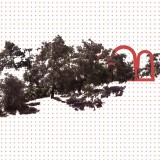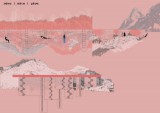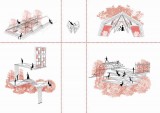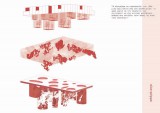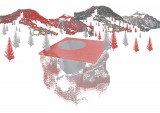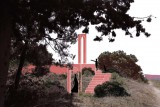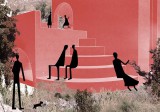Supervisor:
2021
The present dissertation was based on a research approach, which was an inspiration but also a motivefor design, through the direct or indirect correlation of different concepts.
The starting point was the discovery of the Karamanis Sanatorium, as a finding, in Chania, Pelion, during a walk in the area. Its unique location, the natural and territorial landscape that surrounds it, the atmospheres that arise, as well as its structural features were an important focus of interest.
In particular, the large terrace stood out from its construction elements, a large "habitable" platform as a continuation of the ground, with an impressive view of the sea and natural landscape and with a strong social character. The above led to a study of terms, concepts and situations, that included the way in which a platform redefines the way in which land can be habitable.
In order to give a materiality to this study, a practical methodology was carried out through experiments, which then inspired the produced design results,that formed the field of our creation.
In this context, the human presence was incorporated as part of the program of the network of structures, which in addition to the utilitarian and morphological role of the components, provided a freedom in the perception of the spatial content of each structure.
The placement of these structures at points of direct contact and continuation of the ground, made them findings in a walking path of their discovery on the hill of Goritsa. Thus, in the end, certain placement typologies were created, equivalent to the form and the elements of each structure, that correspond to the specific local characteristics.
